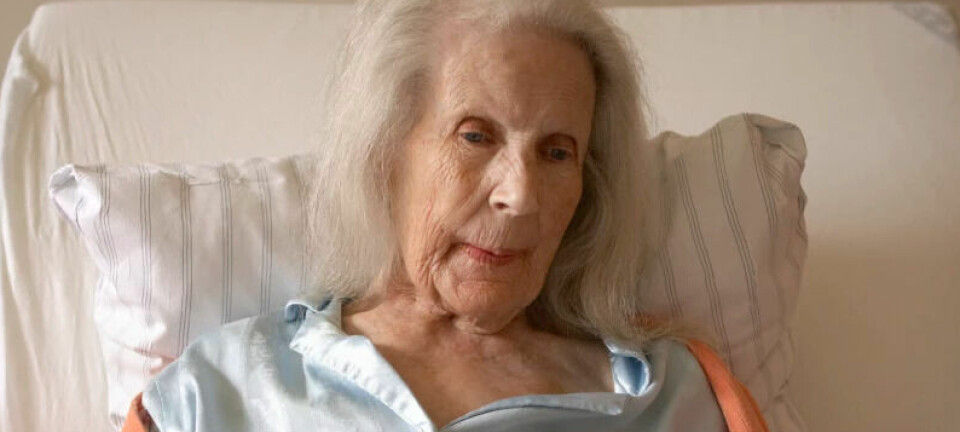
Should loneliness become a diagnosis?
Researchers have somewhat different views on what might solve the problem of loneliness.
The proportion of adolescents who are lonely has increased since the 1990s, a study shows.
Nayan Deepak Parlikar at the Norwegian University of Science and Technology (NTNU) believes the increase may be due to, among other things, more mobile phone use and increased social differences. She is the study's lead author.
What should society do to tackle the problem of loneliness?
Need knowledge about loneliness
Parlikar believes we need more knowledge about loneliness. Specifically what it is, how it is understood and expressed among young people – and their experiences of belonging and exclusion.

She believes loneliness should be its own diagnosis, just like anxiety and depression, rather than just being seen as a feeling.
“If someone has been diagnosed with anxiety or depression, it should also be mandatory to ask if they are lonely,” she believes.
Loneliness often coincides with anxiety and depression.
Parlikar believes this could indirectly increase knowledge about loneliness.
Measures with limited effect
“Adolescents spend eight hours at school every day. Perhaps school is the most important place where there needs to be a conscious effort to address loneliness,” Parlikar says.
Psychologist and researcher Thomas Hansen at the Norwegian Institute of Public Health has written a knowledge summary on the topic for the Ministry of Health and Care Services.
The ministry has worked on a national strategy to combat loneliness, with special emphasis on adolescents and the oldest population. These age groups have the highest number of lonely people.
“The results didn’t bring much clarity. A variety of approaches, including therapy, social meeting places, and digital social networks, have been tested. Most of the measures have proven to have limited effect,” Hansen tells sciencenorway.no.
Not as simple as bringing people together
Hansen believes more research on preventive and structural measures is needed. He thinks these have a greater effect than treating the loneliness that already exists.
“In short: It's not as simple as bringing people together to stop them from being lonely,” Hansen says.
He does not believe in a quick and easy solution to the problem but supports increased awareness of the harmful aspects of social media among adolescents.
“Age limits on Snapchat and social media could be beneficial. It might be a good idea to delay this exposure for as long as possible,” he believes.
Sceptical of pathologising problems we all have
Thomas Hansen is sceptical of the idea of loneliness as its own diagnosis, on par with anxiety and depression.
“I am sceptical of pathologising problems that we all have. When I think of loneliness, I think of it as something other than a mental health problem. At the same time, we know that chronic loneliness is associated with an increased risk of a number of physical and mental health problems, so it’s important to take it seriously,” Hansen says.
He believes we should not diagnose normal and temporary difficulties. Many young people talk about being depressed or having anxiety without having been diagnosed, says Hansen.
According to Hansen, we are inherently equipped with anxiety and negative emotions for a reason.
“Especially historically, but also today, they have important human functions. But beyond a certain duration and severity, it becomes serious,” he says.
Better social ties with a steady job?
Young people carry the greatest burden of loneliness in the UK, according to researchers Julia Morgan and Vincent La Placa. They wrote an article about this in The Conversation in December 2023.
Social media has been shown to affect our relationships with other people, they write.

The researchers also mention that more young people are without steady jobs and change workplaces more often. They believe that having a steady job can make it easier to form friendships.
They think it is important that society regards loneliness an epidemic, not as a personal failure.
Morgan and La Placa also believe it is important to get help when loneliness becomes overwhelming. This can feel harder than it should, the researchers write.
“Perhaps because of the mistaken belief that it is something that affects older – not younger – people. It is not uncommon to feel shame or fear being mocked or blamed for feeling this way,” they write.
Too focused on the symptoms?
“By talking about loneliness as a virus or an epidemic, we pathologise it,” says Professor Fay Bound Alberti. She wrote an article in The Conversation in 2019. She believed there was a tendency to view feelings as mental health problems.
There is too much attention on symptoms and not causes, she believed.
She attributes much of today’s loneliness to our ideas about the society we live in. We have a conviction that people are fundamentally individuals completely separate from each other and unique, she believes.
Furthermore, Alberti claims that loneliness is more than one thing and that we tend to forget that. For example, she mentions how a single mother in a food queue feels lonely in a completely different way than an old man who has lost all his friends.
A teenager who has a rich social life online, but not so many friendships outside the internet, will also be completely different from the single mother and the old man.
Maybe we are already doing something right. Thomas Hansen says that the latest figures from Ungdata (Young data) may indicate that the trend has reversed in Norway.
———
Translated by Alette Bjordal Gjellesvik
Read the Norwegian version of this article on forskning.no
Reference:
Parlikar et al. Loneliness in the Norwegian adolescent population: prevalence trends and relations to mental and self-rated health, BMC Psychiatry, vol. 23, 2023. DOI: 10.1186/s12888-023-05404-5







































